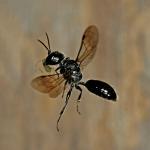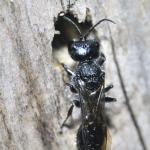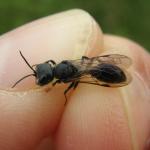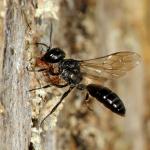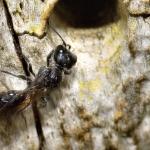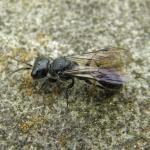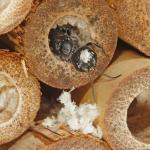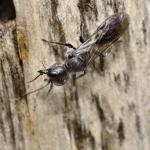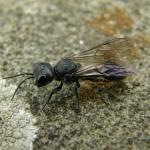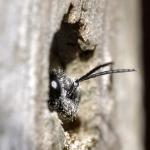Pemphredon concolor SAY 1824; Pemphredon cressoni DALLA TORRE 1897; Pemphredon luctuosa SHUCKARD 1837; Pemphredon morio CRESSON 1865 preocc.; Pemphredon ocellaris GIMMERTHAL 1836; Pemphredon pacifica GASSAKOVKIJ 1932; Pemphredon provancheri DALLA TORRE 1897; Pemphredon shawii ROHWER 1917; Pemphredon tinctipennis CAMERON 1908;
This is the sole British representative of the subgenus Pemphredon, a group which has had a little more taxonomic stability than the other subgenera (Cemonus and Ceratophorus).
A widespread species, recorded from England, Wales, the Isle of Man, Scotland, Ireland and the Channel Islands.
It occurs throughout Europe and the Palaearctic across to the Far East, with records from Turkey, Iran, Mongolia and Japan. It is also found in North America, Canada and Mexico (Bitsch et al. 2001).
This species is not regarded as being scarce or threatened.
Occurs in a wide variety of habitats where dead and decaying wood may be found.
May to September.
Mainly aphids (Hemiptera: Aphididae), with up to 40 per cell (Lomholdt, 1984), although Whitehead (1990) cites a nest excavated in rotten elm wood that was provisioned with plant-hoppers (Hemiptera: Cicadellidae).
Nests in dead and decaying wood. The nest comprises a branched tunnel system, with each branch terminating in one to several cells (Bitsch et al., 2001; M Edwards, pers comm.). Lomholdt (1984) states that the cells are situated in rows and also observes the very occasional use of a shared entrance hole by two or more females although the subsequent nest tunnels were quite separate. Janvier (1961) cites an observation of the species [as P. luctuosus] nesting in galls on oak trees.
No data available.
Lomholdt (1984) gives the ichneumonids Perithous scurra (Panzer) [as mediator] and P. divinator (Rossi), and the chrysidids Pseudomalus violaceus (Scopoli) and Omalus aeneus (Fabricius) as hymenopterous parasitoids. Pseudomalus auratus (Linnaeus) is also recorded as a parasite (Blösch, 2000; M Edwards, pers. comm.).
2012


